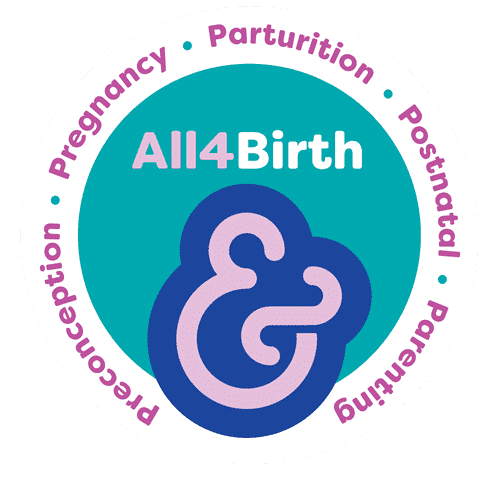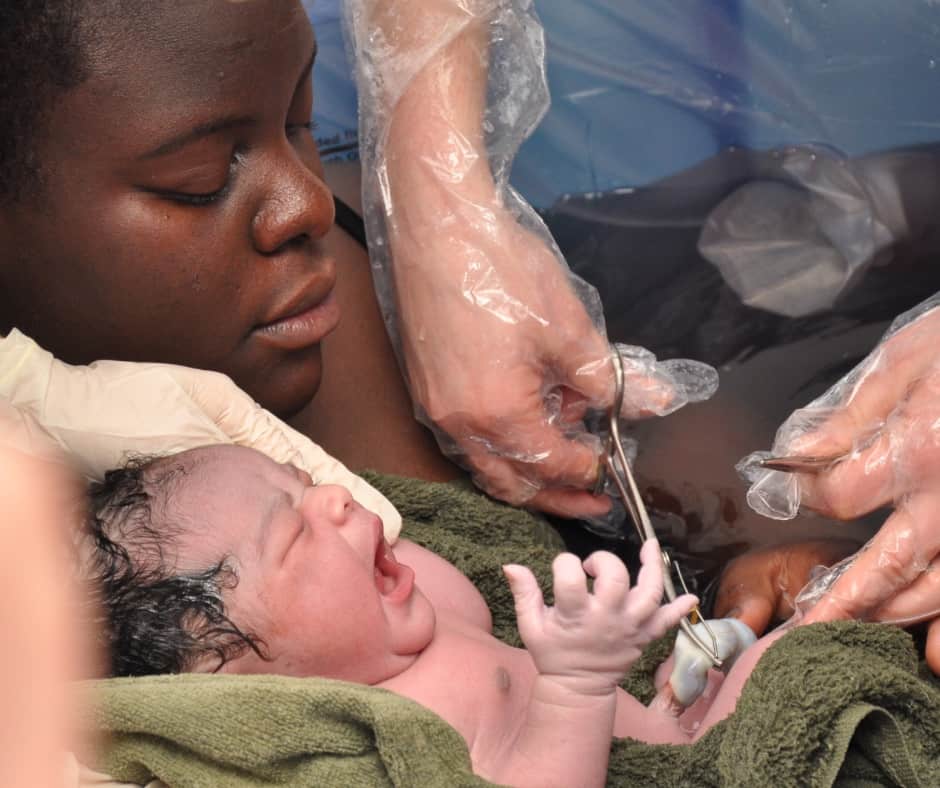Dr Jenna Brough
Perinatal Clinical Psychologist
@dr.jenna.psychologist
Summary
With the highest incidence of birth trauma [1] and subsequent PTSD [2] occurring after first births, trauma can leave lasting psychological scars for parents contemplating another pregnancy. Understanding and addressing the impact of the previous birth experience is crucial. In this blog post, we’ll outline the impact of birth trauma on future pregnancies and how to navigate the path toward healing and safety.
The Occurrence of Birth Trauma and Resulting Difficulties
One in three births is experienced as traumatic [3]. Distress after birth trauma can manifest in various forms: anxiety, depression, OCD, and PTSD. Symptoms may include flashbacks, nightmares, anxiety, avoidance, disconnection, and withdrawal, which can make the prospect of future pregnancies daunting. Recognising the signs of trauma is the first step toward healing and safety. Some people are ready and able to do this before a subsequent pregnancy (which is recommended, as there is less time pressure); others experience an increase in distress and symptoms during their next pregnancy, even if they previously thought they were ok.
Impact on Future Pregnancies
The effects of birth trauma can profoundly influence future pregnancies. Many individuals find themselves grappling with anxiety, fearing a repeat of their previous experiences. This anxiety can lead to over-preparing as parents seek to control every aspect of the experience to mitigate their fears. They research every possible scenario, attend all the classes, and delve into all the online stories and communities. However, this over-preparing is fueled by unprocessed trauma and can exacerbate feelings of anxiety, creating a cycle that is hard to break. At the other extreme, some people will avoid pregnancy altogether.
The psychological scars from birth trauma can lead to a distorted sense of safety. What once felt like it would or should be a natural and joyous experience may now seem fraught with danger. Understanding how trauma impacts your perception of safety is essential for both mental well-being and the health of future pregnancies.
Preparing for Future Pregnancies: Steps Toward Healing
If you’re considering a future pregnancy or are currently pregnant and dealing with the aftermath of birth trauma, there are several steps you can take to foster healing and a sense of safety:
1. Self-Help Techniques
Engaging in self-help practices can be beneficial in processing trauma. Journaling can help you connect with and better understand your feelings and experiences, and has been shown to reduce postpartum low mood and stress [4]. Mindfulness practices and grounding exercises, such as focusing on your breath or engaging your senses, can also provide relief from anxiety [5]. If you are currently pregnant, related exercises may be part of pregnancy yoga or antenatal preparation, such as hypnobirthing.
2. Debriefing Your Experience
Consider debriefing your birth experience with a professional (often midwives, doulas, or psychologists/therapists facilitate these). Sharing your story can be cathartic and help you make sense of your feelings. This process allows you to articulate what happened, how you felt, and what you need moving forward. If you have specific questions about the clinical aspects of your care, it would be beneficial to choose someone with a background in midwifery who can answer these. There is currently no strong evidence of benefit or harm of debriefing [6], anecdotal evidence is mixed, and listening/debrief services vary widely due to a lack of standardised guidelines and training [7]. If you would like to debrief your birth experience, consider accessing support through a service or professional you have heard positive things about from trusted friends or like-minded online communities.
3. Therapy to Process Trauma
Therapy is a safe and effective way to process trauma, even during pregnancy [8]. A mental health professional specialising in perinatal trauma can guide you through your experiences, help reduce distress, and enable you to focus on the future. This includes developing coping strategies and making informed decisions about your next birth. Trauma-focused cognitive Behavioural Therapy (CBT) and Eye Movement desensitisation and Reprocessing (EMDR) are recommended in NICE guidelines for treating PTSD and trauma [9].
4. Understanding Safety and Safeness
It’s essential to recognise that a traumatic birth can affect how you perceive safety in future pregnancies. Both safety and safeness are important. Whilst ‘safety’ concerns reducing risk or threat, ‘safeness’ involves increasing comfort and security [10]. Feelings of safety and safeness vary from person to person. For some, it may mean having a supportive partner or a trusted medical team; for others, it may involve specific birth plans or environments. Reflect on what safety and safeness mean for you now, compared to your previous experience. This introspection can help you articulate your needs and preferences for your next pregnancy, birth, and postpartum. Communicating these needs to your healthcare team can help you feel better supported and heard.
5. Discrimination Awareness
It’s important to recognise that discrimination can and does occur in healthcare settings, especially for those with a history of trauma. Being aware of this can help you navigate your care more effectively. Speak up about your needs and preferences, and don’t hesitate to seek a second opinion if you feel unheard. Consultant Midwives in particular, are often well placed and experienced in supporting those who are pregnant after birth trauma.
Conclusion
Planning for pregnancy after experiencing birth trauma is a journey that requires compassion, understanding, and support. By acknowledging the impact of your previous experiences, seeking support, and taking steps to heal and foster safety, you can move forward with increased confidence of a more positive pregnancy and birth experience. Remember, you are not alone on this journey, and there are resources available to help you navigate the complexities of your feelings and experiences. Embrace the process and take any and each step at your own pace.
Links to other resources
 Websites and Further Research
Websites and Further Research
- www.willowsrainbowbox.co.uk
- Baby Loss in Different Cultures & Communities – Willow’s Rainbow Box
- Willow’s Rainbow Box Impact Report 202324 FINAL.pdf – Google Drive
- The presence of anxiety, depression and stress in women and their partners during pregnancies following perinatal loss: A meta-analysis – ScienceDirect
- Meditation and mindfulness reduce perceived stress in women with recurrent pregnancy loss: a randomised controlled trial – ScienceDirect
References
(This is not an exhaustive list of evidence; for this article, recent and key studies are presented as examples)
- Green, Tesler & Marques (2022). Primiparous and multiparous women’s mode of birth and negative emotions
- Horsch, et al (2024). Childbirth-related PTSD: definition, risk factors, pathophysiology, diagnosis, prevention, and treatment
- Ayers, S., Horsch, A., Garthus-Niegel, S., Nieuwenhuijze, M., Bogaerts, A., Hartmann, K., Karlsdottir, S. I., Oosterman, M., Tecirli, G., Turner, J. D., Lalor, J., & COST Action CA18211 (2024). Traumatic birth and childbirth-related post-traumatic stress disorder: International expert consensus recommendations for practice, policy, and research. Women and birth : journal of the Australian College of Midwives, 37(2), 362–367. https://doi.org/10.1016/j.wombi.2023.11.006
- Polderman, K., Garthus-Niegel, S., Mennes, N., Nielsen, S. S., & Horsch, A. (2024). Effectiveness of expressive writing therapy for postpartum women with psychological distress: Meta-analysis and narrative review. International Journal of Gynecology & Obstetrics. Advance online publication. https://doi.org/10.1002/ijgo.14567
- Dekel, S., Stuebe, C., & Dishy, G. A. (2023). Preventing posttraumatic stress disorder following childbirth: a systematic review and meta-analysis. American Journal of Obstetrics & Gynecology. Advance publication.
- Rose S., Bisson J., Wessely S., Priest S., Henderson J., Evans S., Hagan R. (2006). Midwife‑led debriefing after operative birth: four to six year follow-up… BMC Medicine, 4:3.
- Thomson, G., & Nowland, R. (2024). A rapid evidence review of postnatal listening services for women following a traumatic or negative childbirth experience. Midwifery, 139, 104185. https://doi.org/10.1016/j.midw.2024.104185
- Baas, M. A. M. et al. (2023). How safe is the treatment of pregnant women with fear of childbirth using EMDR therapy?… Acta Obstetricia et Gynecologica Scandinavica, 102(11), 1575–1585. https://doi.org/10.1111/aogs.14628
- National Institute for Health and Care Excellence (NICE). (2018). Post-traumatic stress disorder (NICE Guideline No. 116). https://www.nice.org.uk/guidance/ng116
- Gilbert, P. (2009). Introducing compassion-focused therapy. Advances in Psychiatric Treatment, 15(3), 199–208. https://doi.org/10.1192/apt.bp.107.005264









